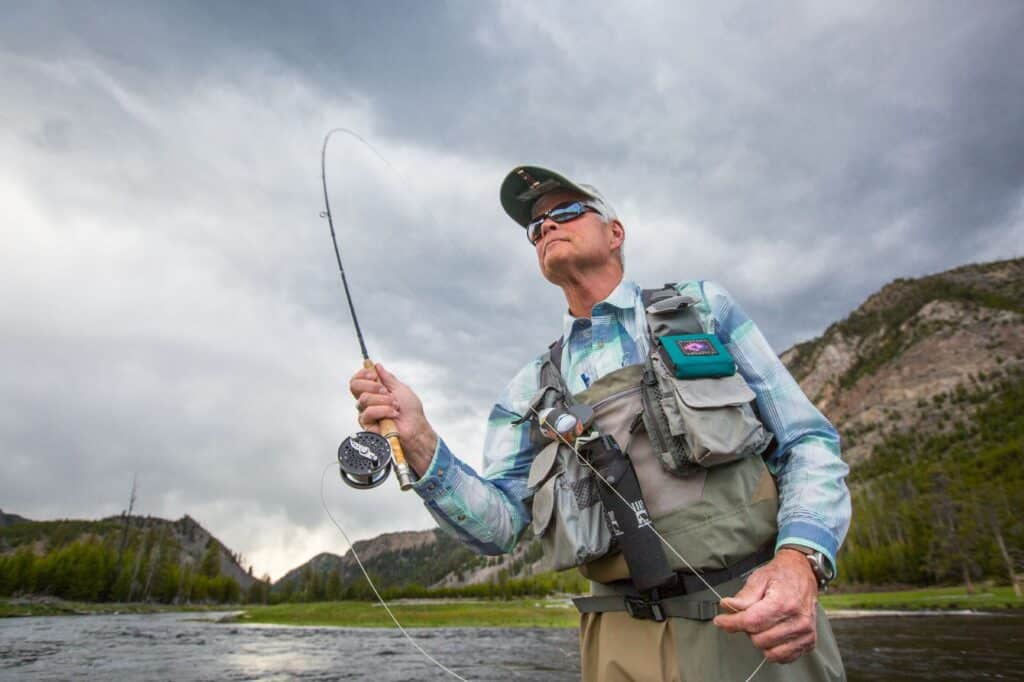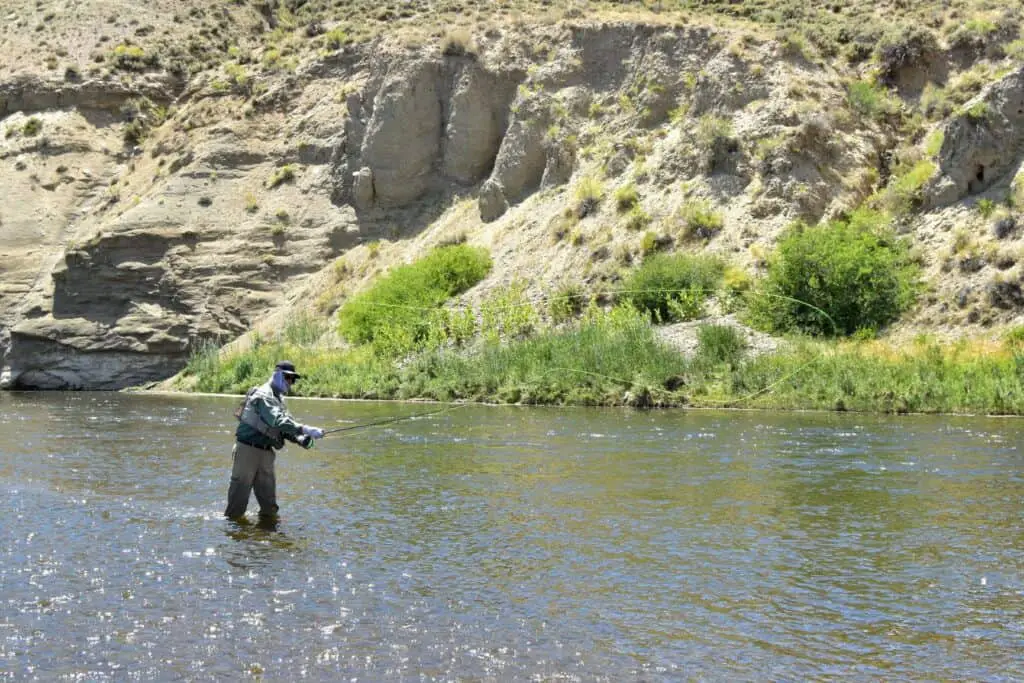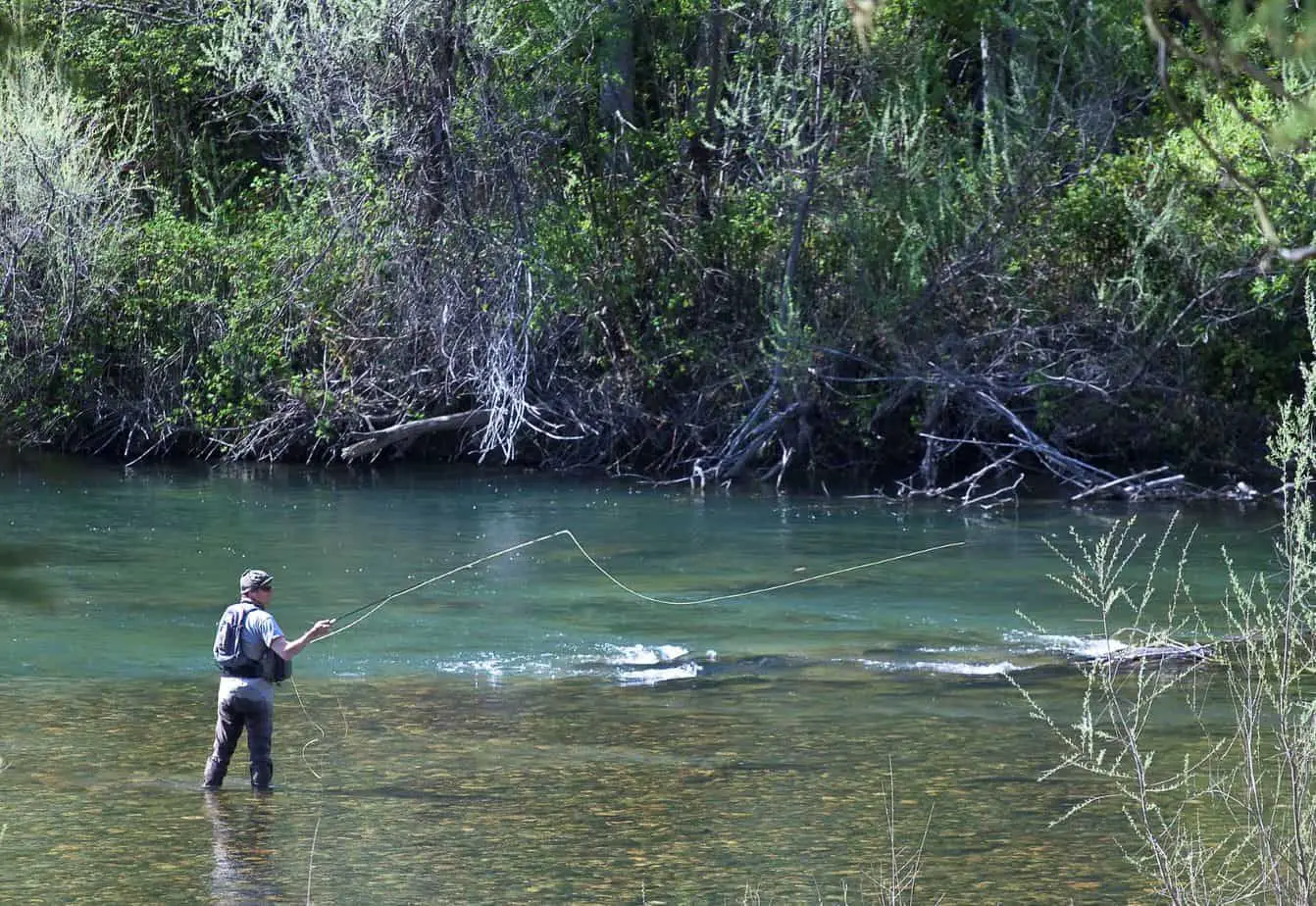If you’ve never done it, fly fishing looks very difficult. Fly fishing uses strange terms and unfamiliar fly fishing gear. No wonder many people think it is difficult.
So is fly fishing difficult?
Fly fishing is not difficult to learn. Most anglers will get better at fly fishing over time and with practice, but it is not any harder than regular fishing. Once someone explains some basic fly fishing concepts to you, learning to fly fish can be easy.
Unless you grew up fly fishing, you are probably going to need to be a bit self-taught. Fly fishing also isn’t something you can ultimately pick up by just reading about it.
If you’re interested in learning to fly fish, you’re going to have just get out there and try it.
Let’s start with some fly fishing basics.
Fly Fishing Gear For Beginners
While there is expensive fly fishing gear out there, a beginner doesn’t have to start with it. Beginner fly fishing kits are available on Amazon, like this one from Wild Water.
Most quality starter kits include a fly fishing rod, reel, rod case, and fly case. They don’t have to be fancy to start.
Spending more money won’t make you catch more fish.
You’re probably going to want to buy some basic waders and polarized glasses as well. There are some other fly fishing gear pieces a beginner would like, but let’s keep it simple for the moment.
If you’re interested in a more detailed breakdown of possible fly fishing expenses, read our recent article, “Is Fly Fishing Expensive?”

What Are The Parts Of A Fly Fishing Rod?
The first thing everyone thinks of is the fly fishing rod. A fly fishing rod has several different parts. Once someone explains them to you, they make perfect sense.
- Fly Rod
- Fly Reel
- Fly Backer
- Fly Line
- Leader
- Tippet
If you buy a quality beginner kit, it should have all of these included.
Fly Rod
Fly fishing rods are typically longer and more flexible than their spinning counterparts. There is no standard fly rod length, but on average, they are generally around 9 feet.
Modern fly rods are typically made from graphite or fiberglass, but there are still some handmade bamboo ones out there. Stick with graphite or fiberglass rod as a beginner.
Most fly rods will disassemble to fit into a rod case for protection.
Fly Reel
Fly reels are generally cast metal or machined. A cast metal reel is typically perfect for beginners. Avoid plastic reels.
Fly reels need to match the rod, but again, start with a fly fishing kit, and this is done for you.
Fly Backer
The fly “backer” is simply the part of the line attached to the fly reel. It is the “back” part of the line. It is typically brightly colored and is there as an extra line if you have a fish run on you.
Fly Line
The fly line itself is attached to the backer. It is also brightly colored and provides weight to the cast. Most fly fishing doesn’t use extra weight, so to make a cast, the weight must come from the line.
The fly line is what you see in those cool pictures of fly fishers casting.
Leader
In fly fishing, a “leader” is used to transition from the line to the tippet. The leader is typically clear. They can vary in length depending on specific conditions but are common in the 7 to 10 feet range.
Tippet
The tippet is the part that is attached to the leader and the fly. It is the “tip” of the line.
Flies
The type of fly you use will depend on how and what you’re fishing for. There are some general categories.
- Dry Flies – These lightweight flies act as a flying insect on the water’s surface.
- Wet Flies – These flies work just under the water’s surface.
- Nymphs – Nymphs mimic the insect larva that lives underwater. You can read more about it here: What is Nymphing?
There is likely a local fly fishing shop in the area you are going to. Give them a call, and they’ll tell you what is best for that area.
Beginner Fly Fishing Casting
The goal of every fly fishing beginner is to get an excellent overhead cast. It may be the only technique you need for a long time.

There are six basic steps to an overhead cast:
- With the rod in your casting hand, start with the rod at waist level.
- With your other hand, pull out 8 to 10 yards of line in front of you. Don’t let it tangle at your feet.
- When you’re ready to cast, quickly bring your arm back so the rod tip back to about the 2 o’clock position. This movement needs to be quick to load the rod with tension properly.
- As the movement pulls the line back behind you, quickly pull your arm and rod forward. This movement should gently “whip” the line back in front of you. It is a gentle whip, not like hard cracking a whip.
- Repeat the process to let out more line continually.
- Once you have enough line to reach your targeted destination, gently lay the line into the water, rather than slapping it down. You won’t scare the fish if you’re gentle.
It is okay to practice in your yard before you go out. It doesn’t take long to figure it out, but you’ll want to try it a few times. You’ll be glad you did.
Beginners Fly Fishing Destinations
The best beginner fly fishing destination is one that convenient for you. If it is easy to access and has quality fish, start there. Save the more exotic destinations for after you gain a little experience.
That said, there are some excellent options for guided fly fishing excursions for beginners. A fly fishing trip like this allows you to visit a world-class fly fishing destination and have experienced guides to work with you while you’re there.
For example, Yellowstone Country Fly Fishing offers guided trips in the Montana and Yellowstone area. Many of these trips are specifically designed for fly fishing beginners.
Another option is to check out Orvis’s fly fishing trips page. If you are not yet familiar with Orvis, they are the most well-known brand in fly fishing today. This resource is excellent for beginners and veterans alike.
Conclusion
Learning to fly fish is easy.
The hardest part is taking the first step and being willing to make a mistake. Even the fly fishing veterans we talk to admit to making all kinds of errors.
The great part about fly fishing is that you can keep learning new things. Every little fly fishing shop will have a new tip or trick the owner would be happy to tell you.
Or maybe you’ll learn to tie your own flies.
Or maybe you get the opportunity to fish exotic species in other parts of the world.
Fly fishing is not difficult. Not going overboard with your new hobby is.


